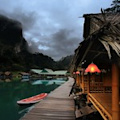The Domestic Scenario of South Asian Regions

The
conflict as has been created strategically among the South Asian states is
diverse too and as such the nature of the conflict between India and Sri Lankan is different from that of
the conflict between India
and Bangladesh , Pakistan or Nepal India ’s insistence on bilateralism gets
priority, and India Pakistan has accepted the superior military
strength of India Bangladesh
has limited scope of independence, for Nepal
and Bhutan Sri Lanka failed to resist Indian hegemonic
attitude when in 1977 the Jayewardene government opted for a free-market
economy, making Sri Lanka Pakistan India India then took the
opportunity of the Tamil separatist issue to put pressure on Sri Lanka Sri
Lanka ’s relationship with United
States and Pakistan India cannot apply this type of hegemonic
attitude towards Pakistan
There are differences in objectives in
respect of SAARC among the South Asian countries. SAARC is indeed a facility
and an opening for Nepal and
Bhutan Pakistan India India
For
India India

Comments
Post a Comment